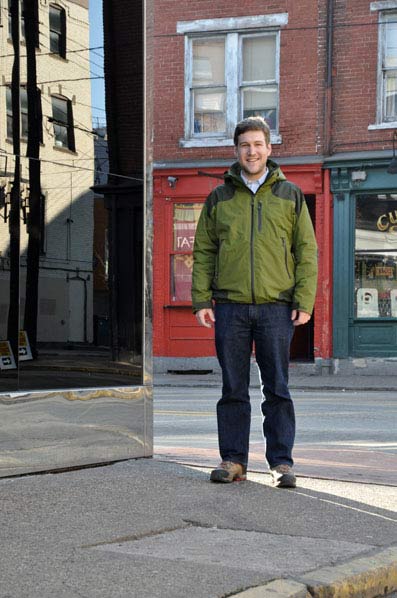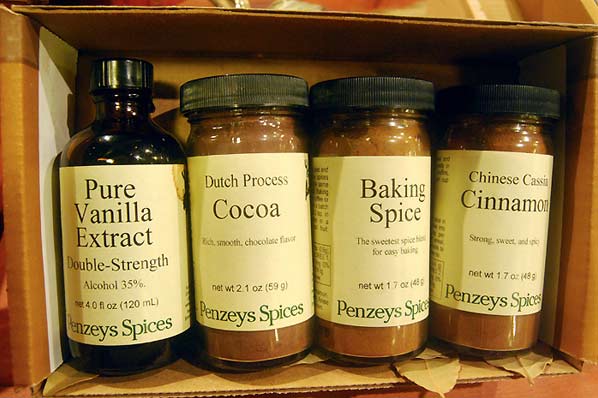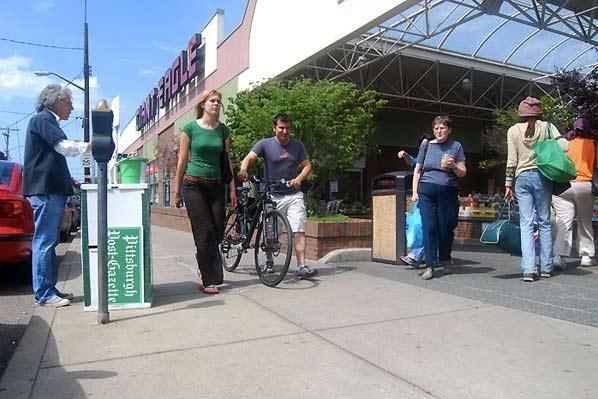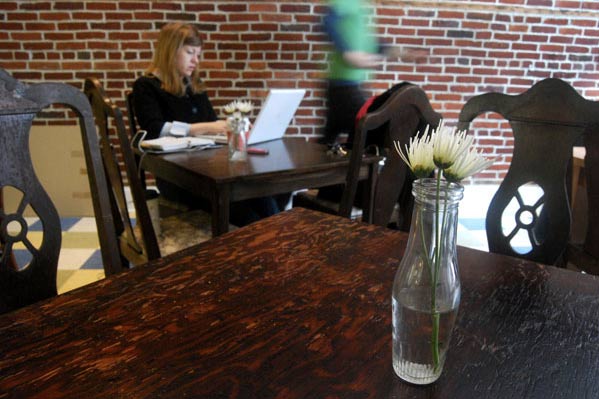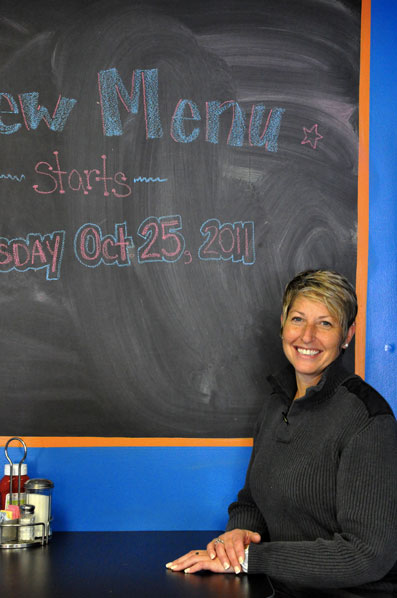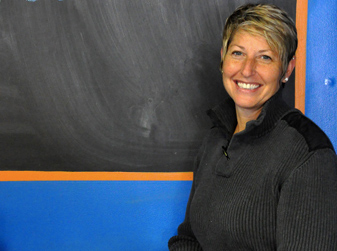Is a Thai restaurant the barometer of a hip neighborhood? A greengrocer? Night life? In the chess game that is business district management, some neighborhoods may appear to have all the pieces – but do they? Pop City decided to survey various neighborhoods to see what's missing. Where there's a need, there's an opportunity. Calling all entrepreneurial types!
The Strip District “is only 12-25% retail,” says Becky Rodgers of Neighbors in the Strip. “The rest is wholesale. People thought they could just open in the [Pittsburgh Public] Market and make money.” The reality is you need a good idea like Wigle Whiskey, a distiller recently opened on Smallman Street. With stalwarts such as Penzey’s for spices and Labad’s for Middle Eastern, the Strip is set, right? Not quite.
“We really want Indian food!” exclaims Rodgers. “We get lots of national and international visitors as a first- or second-day destination in the region.” The growing number of residents (Lot 24, a 97-unit rental development on Railroad Street, will soon break ground and plans call for new residential along the riverfront behind the produce terminal) means amenities including a dry cleaners and pharmacy are also needed.
In Lawrenceville, “our strength is a nice mix of convenience and destination businesses,” says Maya Henry of the Lawrenceville Corp. Butler Street from 34th to 55th is a designated Main Street District and while the 30s tend toward trendy restaurants and apparel, the 40s are populated by convenience businesses including a cobbler, a pharmacist and French baker La Gourmandine. The 50s are still finding their raison d’etre.
A food gulch may develop in the latter now that Cure has opened across the street from Thai restaurant Pusadee’s Garden and close by where greengrocer Wild Purveyors will reside. “We love to see clusters of apparel and restaurants,” says Henry. “If one restaurant is busy, there’s another. We also want people to make a Saturday of shopping our retail.” What’s missing? A grocery and hardware store.
East Carson Street on the South Side is the longest extant Victorian commercial district in the U.S. and a National Historic District. “You can run every errand by foot – and it’s flat,” notes Aaron Sukenik of the South Side Local Development Co. “We have a dual economy, day and night. There are thousands of employees in the district so we encourage retailers to stay open late. Our nighttime activity is regional and national so when people visit Pittsburgh for games, they know to come here afterward.”
With the neighborhood’s demographic shifting from older adults to under 35, Sukenik wants an Indian restaurant along with more healthy/organic lunch options and a re-imagined butcher shop where people could order online and pick up later. A marina near the Hofbrauhaus in the permitting phase and will add even more caché.
In the 1940s and 50s, East Liberty was the third largest retail district in Pennsylvania (behind Philadelphia and Pittsburgh) thanks to the buying power of East Enders. The mall-ification of the 60s changed that and the neighborhood has been re-imagining itself since. “We’re striving toward mixed-income residential development,” says Skip Schwab of East Liberty Development Inc., “and we need amenities to do that.” Wish fulfillment is coming in the way of the Ace Hotel, a 40-room boutique property in the old YMCA, and a digital theatre in the former PNC Bank building. An REI store in Bakery Square would be icing on the cake.
The Penn-Garfield corridor is “the least expensive commercial district in the East End,” according to Rick Swartz of the Bloomfield-Garfield Corp. with buildings priced under $100,000. Now that the onetime working-class district is an emerging artist colony, the key is “a concerted effort to get kids to stay in the city.”
I
While the Pittsburgh Glass Center and Mr. Roboto Project pair nicely with graphics studios Ion Tank and Image Box, Swartz needs to see more housing for artists (“we need extended stays and youth hostels”) and a small grocery store “like a Bottom Dollar, and a breakfast spot or deli on Friendship Avenue.” Next door in Bloomfield, Swartz says the equation is simple: “Rents need to come down. Landlords have to be more bottom-line driven [to attract emerging retailers].”
Ever-traditional Squirrel Hill manages to have hip cred thanks to two Thai restaurants, an art-house theatre, Jerry’s Records and the quirky Gluuteny. Game over? Not quite. “If there were more going on, people would be here,” says Jes Bogdan of Squirrel Hill Magazine. “Rents are too high. The Barnes & Noble location is still empty. With more students living here, building owners need to listen to newer residents. We need night life, not sports or college bars but performance venues like in East Liberty and Lawrenceville.”
The Northside “has always been a diverse community but it’s becoming increasing middle class,” says Mark Fatla of the Northside Leadership Conference. That means a need for convenience businesses but the neighborhood business district, E. Ohio Street, has an uphill fight against McKnight Road a mere ten minutes away. “The Northside has a uniqueness and character so we’re well positioned,” continues Fatla. “We could use a dog groomer, a fitness center, a storefront real estate agent and a mid-range restaurant. It’s our turn.”
While the North Hills is rich in both convenience businesses and big-box stores, fine dining has been missing but that’s changing with the opening of a second Tamari in Warrendale that suits the area’s young, affluent demographic. A BRGR location in Cranberry ups the ante as will Winghart’s, opening in Warrendale later this year.
The S. Braddock Avenue business district in Regent Square may be compact but it packs a punch: fine dining, the quintessential beer store and a Square Cafe on the same block. What’s missing? “We could really use a fresh market with breads, produce and prepared foods and a pizzeria for eat-in or delivered,” says Sherree Goldstein, owner of Square Cafe.
Mt. Lebanon, due south, still sees “tremendous interest” in its Uptown business district along Route 19, according to Eric Milliron, the municipality’s Business Districts Manager. With over 1,000 employees in the center of town and 20,000 vehicles driving through daily, it’s easy to see why. High on Milliron’s list are a “third place gathering scene, a co-working space for consultants and entrepreneurs and an ethnic restaurant, maybe Thai or Korean” as part of a vibrant restaurant row alongside perpetually-packed Il Pizzaiolo and Bistro 19.
New Girl In Town ELAINE LABALME wants a fabulous shoe store in Mt. Lebanon while Pop City editor Tracy Certo pines for a Thai restaurant. (Hear that, Nicky's Thai Kitchen?) What would you like to see in your neighborhood? Email us here.
PHOTOS copyright Brian Cohen
Aaron Sukenik on Carson Street
Highland Avenue in East Liberty
Penzey's in The Strip
Murray Avenue in Squirrel Hill
Rick Swartz in Garfield
Dozen in Lawrenceville
Sheree Goldstein in Regent Square

